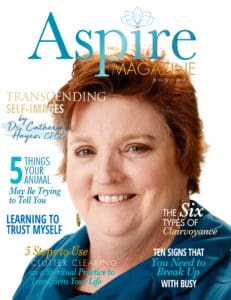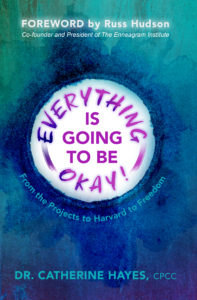
The funny thing is, I used to joke that I would have to get hit on the head to “wake up.” Then, I had an accident which resulted in a head injury, and my awakening process began with a monumental jolt.
I think that I knew, deep inside, that there was more to me than who I was being and expressing. I strove, I struggled, I achieved. I worked, and worked, and worked―and it was never ever enough. Consciously, I wasn’t aware of how far I was from my true self, but there was a subconscious or unconscious knowing that came through in jokes like that one. Some part of me was asking for change―and the Universe took me literally!
I wonder, sometimes, whether I would have needed that whack on the head if I had been even a little more aware of and open to the fact that there was more to me than my personality. Hopefully, you won’t need to be “woken up” in such a dramatic fashion!
Our essential nature can and does give us a depth of experience that the personality never can. As I practiced bringing myself into a place where I could access an essential aspect of my nature instead of the contrived personality aspect, I was struck by the quality of my experience. The sense of peace, well-being, and freedom was incredible. For example, the difference between relaxing into the essential aspect of strength and having to “be strong” was palpable on every level―physical, emotional, and spiritual. One was peaceful, flexible, and comforting; the other felt hard, sharp-edged, and exhausting.
So, why do we spend so much more of our time and effort on the false self? Because to be in essence we must be willing to see the whole truth of who we are―light and shadow, positive and negative.
As a person who values truth and authenticity, it was tremendously painful to me to see how much of my life had been lived from a place of inauthenticity. How had I spent so many years pursuing the exact opposite of my heart’s desire? And how much time had I spent trying to be “strong,” when all along I could simply relax into my essential aspect of strength? Each Enneagram personality type has a unique way in which they “fall asleep” and let their personality take over; I was completely oblivious to the ways in which I was abandoning my heart in favor of achievements and recognition.
Seeing this imbalance between being in personality and being in essence brought me to one of my first [spiritual] dilemmas. If it was so easy and natural to embody our essential states, I wondered, why didn’t we just live there all the time?
The answer came, in part, from our group sessions [in the Diamond Heart]. When we began to explore our self-images and object relations―i.e., transposing our past experiences or relationships onto our current ones―I felt a whole new layer of unfolding happen within me. I began to see how many self-images I had, and how many the other people in my group were facing. We challenged each other to look at our self-images by providing feedback on what we saw in one another, and pointing out what felt real and what felt false. It was not always easy to hear this new perspective on who we felt we “needed” to be to survive in the world, but it was also freeing.

As you can probably guess, my self-images centered around being seen as successful, kind, good, and accommodating to the needs of others. As I explored why I held onto these images, I saw how deep their roots were, and how high their costs were for me. I wanted to be as kind, good, and likable as possible because I had grown up feeling wrong and shunned. I never wanted to be mean, or feel anger or hatred, because those would indicate that I was “giving in” to my family’s ideas about me.
When we do not honor an aspect of ourselves, such as anger, we don’t make it go away. Instead, it retreats into the background―but it’s always running behind the scenes, influencing our decisions and fueling our false selves. If we don’t look at the parts of us that we find unacceptable, we can never be whole. However, when we find the courage to look at those “shadow” aspects of ourselves―those painful parts we don’t want anyone to see, or that we’ve pushed down―and bring them to light, we no longer need to spend energy feeding the false selves that protect those vulnerable parts of us. We can simply be more of who we are.
Two Inner Voices
Along with the aspects of ourselves which we suppress, the superego (aka, the inner critic) loves to build up our false selves. When my Diamond Heart teacher and I first started working with the superego, I was so relieved to learn that I wasn’t the only one in the world who would beat myself up over every little transgression! This cruel, derogatory voice inside was part of the human condition. Who knew?
We would never talk with others the way we talk to ourselves. And just because our inner critic says something doesn’t make it true! When we can differentiate the messages of the superego from our true knowing, we can disengage from them and instead look for our real inner wisdom. Doing this work has been immensely freeing for me, and has brought a greater sense of peace to my life.
Along with the Enneagram work, teaching clients to recognize and override the superego is a primary focus of my coaching work. When we can identify where and how our superego is running our lives, and learn to disengage from it, we can finally clear a path to inner peace.
Our superego can take on many forms. It can be quiet and insidious, or very obvious and loud. The important thing isn’t how it shows up, but rather noticing how it takes over. For some people, there is a feeling of shame or inadequacy; others feel it as heaviness or contraction in their bodies. When we know the difference between our inner wisdom and our superego’s negative messages, we can then make a choice about what is true and what is false. Instead of focusing on how we are “deficient” (because when we are living from the superego, we will always feel deficient in some way), we can turn our attention to our essential qualities of love, value, strength, etc., and ground ourselves in our bodies to come more fully into the present moment.
Our superego messages are often so ingrained in us that we have difficulty distinguishing them. One way to begin to identify them is to remember that superego messages are always negative, and are often shaming and judgmental. Often, they are accompanied by a sense of heaviness, inertia, or internal shrinking. This makes sense when you consider that the superego is the part of us that holds us back from taking risks, going after our dreams, and believing in ourselves. It keeps us small. On the other hand, our intuition is a guiding force, directing us along our path of truth and wholeness. Your intuition is always positive, and will never shame you. Often, when you tune into your intuition, you will feel an inner lightness or brightening. [Tweet “Listening to and trusting this inner guidance is one of the greatest steps you can take toward freedom and wholeness. “]
© 2018. Dr. Catherine Hayes, CPCC. An excerpt from Everything Is Going to Be Okay! From the Projects to Harvard to Freedom. www.GoingtoBeOkayBook.com Inspired Living Publishing.



